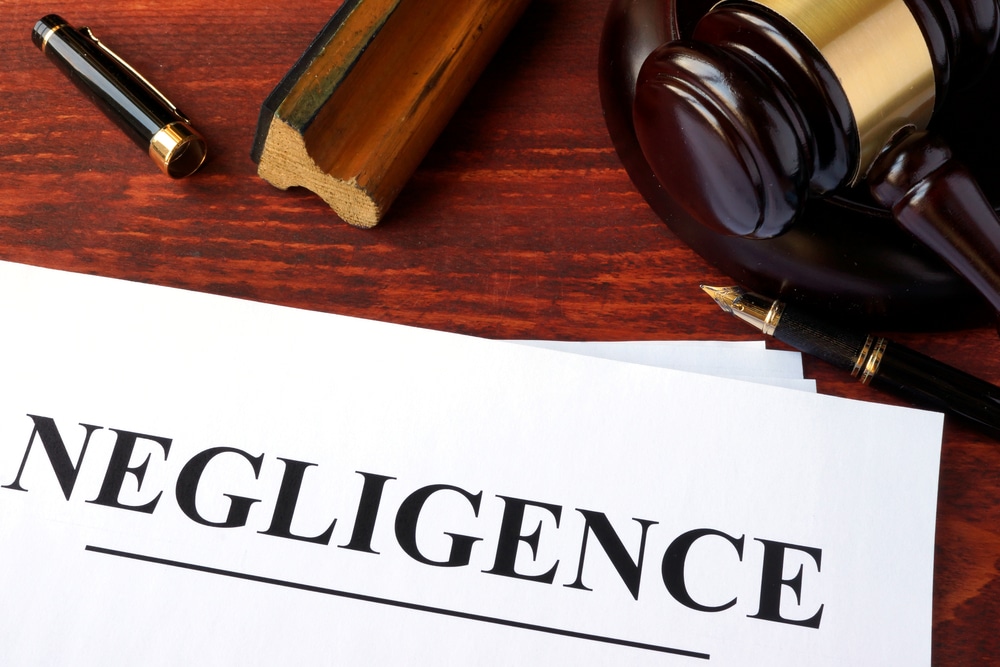
If you ever have an accident in California, you should know something important: you have the right to hold the responsible party accountable for the injuries you suffered. For that reason, California negligence law is a crucial tool for determining liability — and ultimately, how much compensation you may be entitled to receive. This law requires proving four key elements (duty, breach, causation, and damages), which form the foundation of any successful personal injury claim.
In this article, we’ll go over those four key elements in detail so you understand the basics of why and how your claim is being handled. We’ll also explain what happens if you share part of the fault in the accident, along with other essential concepts you should know. All of this, combined with working alongside a personal injury lawyer in California, can help you avoid mistakes, set clear expectations, and increase your chances of obtaining the compensation you are entitled to by law.
California Negligence Law: Key Concepts to Remember
What is Negligence?
Negligence is a legal term used to describe improper or careless actions by a party. It is the standard applied when filing a personal injury lawsuit. In these cases, the injured victim (the plaintiff) claims that the defendant acted negligently and that this negligence caused the accident and resulting injuries.
Under California law, negligence is defined as the failure to use reasonable care. In other words, the defendant should have behaved as a reasonably careful person would under similar circumstances, but instead failed to act safely or engaged in conduct that a reasonably careful person would not have done.
Why you should know this: because it determines whether you have a valid personal injury claim. It also clarifies what must be proven to hold someone legally responsible for your injuries. This knowledge helps set realistic expectations about the strength of your case and the compensation you may pursue.
If you’re still unsure, you can answer the questions in this quick questionnaire and receive an answer from our team:
The Four Elements of Negligence in California
Essentially, a defendant is negligent when they fail to act as a reasonably careful person would under similar circumstances, and that failure directly results in compensable harm. A plaintiff in California must prove all four elements of negligence for a personal injury claim to succeed. These elements are:
1. Duty of Care
California law requires every person to act with reasonable care to prevent accidents and injuries caused by their actions. This duty is established through statutes—such as California Vehicle Code provisions—as well as through general legal standards. The specific duty depends on the circumstances.
For example, a driver has a duty to operate their vehicle safely, follow traffic laws, and avoid behaviors that could endanger others on the road. When someone makes a reckless or unsafe decision, they may be found to have breached this duty.
2. Breach of Duty
A breach occurs when the defendant fails to act with the level of care that a reasonably careful person would have exercised in the same situation. This can involve actions (such as speeding, texting while driving, or running a red light) or failures to act (such as not fixing a known hazard on a property).
In California, breach often includes violations of statutes, like ignoring safety regulations or traffic laws. If the defendant’s behavior fell below the standard of reasonable care, this element is satisfied.
3. Causation
Causation means the defendant’s breach directly led to the plaintiff’s injuries.
California requires proof of both actual cause (“but for” the defendant’s conduct, the injury would not have occurred) and legal cause (the harm was a foreseeable result of the defendant’s actions).
For example, if a driver runs a stop sign and hits another vehicle, the injuries from that collision were caused by the driver’s unlawful and unsafe decision. If the injuries cannot be traced to the breach, the negligence claim fails.
4. Damages
The plaintiff must show they suffered real, measurable harm because of the accident. Damages may include medical bills, lost income, property damage, pain and suffering, and other losses recognized under California law. Without provable damages—even if the defendant acted negligently—there is no viable negligence claim. This element ensures the court can assign a value to the harm caused.
What Happens if You Were Partially At-Fault in the Accident?
California follows a rule called pure comparative negligence. This means you can still pursue compensation even if you were partially responsible for the accident. However, your final award is reduced by your percentage of fault. Under California negligence law, each party involved in an accident is assigned a percentage of responsibility based on how their actions contributed to the incident.
For example, if you were 20% at fault and your total damages were $100,000, you would still be able to recover $80,000. Even if you were 90% at fault, you could still recover the remaining 10%.
This system ensures that injury victims are not barred from compensation simply because they made a mistake. Instead, the law evaluates each person’s conduct and assigns financial responsibility proportionally. That’s another reason to have a skilled lawyer by your side. An attorney can help assess your actual percentage of responsibility (which may be lower than what you assume or what the insurance company claims) and fight for a far more fair and accurate outcome on your behalf.
Time Limits for Filing Negligence Claims in California
California has a statute of limitations that restricts how long a plaintiff has to file a negligence claim. For most personal injury cases — including car accidents, pedestrian accidents, and bicycle accidents — the deadline is two years from the date of the injury. For property damage claims, the time limit is also two years. If the claim involves a government entity, the plaintiff must file an administrative claim within six months of the incident.
After an accident, you may not immediately know who the responsible parties are or which deadlines apply to your situation. That is why contacting an attorney promptly is essential. A lawyer can identify all negligent parties and determine the exact time limits you have to file your lawsuit. Call Megeredchian Law at (866) 359-0807 and schedule a free consultation. Speak to an attorney directly and have a case evaluation in a few minutes.

 Call Us:
Call Us: 